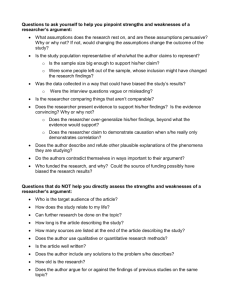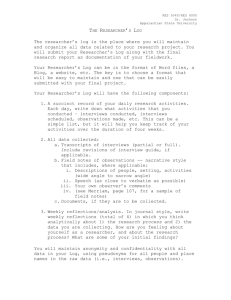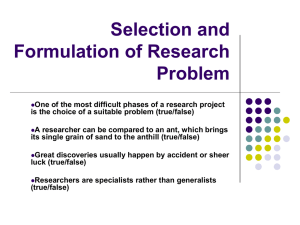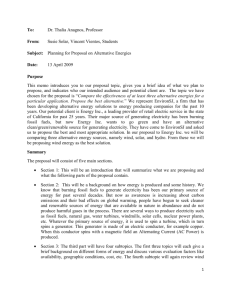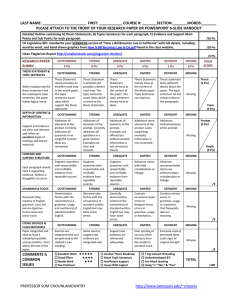Adding Dialogue to the Persuasive Speech
advertisement
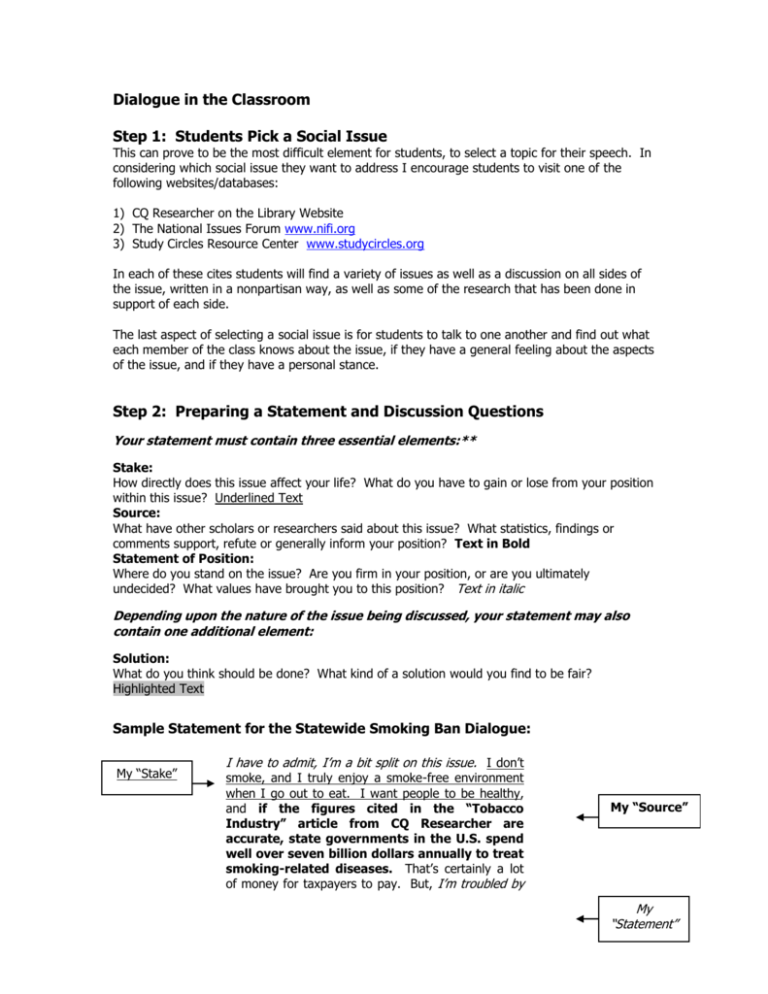
Dialogue in the Classroom Step 1: Students Pick a Social Issue This can prove to be the most difficult element for students, to select a topic for their speech. In considering which social issue they want to address I encourage students to visit one of the following websites/databases: 1) CQ Researcher on the Library Website 2) The National Issues Forum www.nifi.org 3) Study Circles Resource Center www.studycircles.org In each of these cites students will find a variety of issues as well as a discussion on all sides of the issue, written in a nonpartisan way, as well as some of the research that has been done in support of each side. The last aspect of selecting a social issue is for students to talk to one another and find out what each member of the class knows about the issue, if they have a general feeling about the aspects of the issue, and if they have a personal stance. Step 2: Preparing a Statement and Discussion Questions Your statement must contain three essential elements:** Stake: How directly does this issue affect your life? What do you have to gain or lose from your position within this issue? Underlined Text Source: What have other scholars or researchers said about this issue? What statistics, findings or comments support, refute or generally inform your position? Text in Bold Statement of Position: Where do you stand on the issue? Are you firm in your position, or are you ultimately undecided? What values have brought you to this position? Text in italic Depending upon the nature of the issue being discussed, your statement may also contain one additional element: Solution: What do you think should be done? What kind of a solution would you find to be fair? Highlighted Text Sample Statement for the Statewide Smoking Ban Dialogue: My “Stake” I have to admit, I’m a bit split on this issue. I don’t smoke, and I truly enjoy a smoke-free environment when I go out to eat. I want people to be healthy, and if the figures cited in the “Tobacco Industry” article from CQ Researcher are accurate, state governments in the U.S. spend well over seven billion dollars annually to treat smoking-related diseases. That’s certainly a lot of money for taxpayers to pay. But, I’m troubled by My “Source” My “Statement” the way this debate uses the term “smokers.” I drink alcohol on occasion, but I would be upset if people referred to me as a “drinker.” Smokers are people, and all people make choices – both good and bad. I have to remember that even as I point the finger at others’ consumer choices, I should also be willing to look critically at my own consumer choices as well. Should my ability to eat ice cream, drive a car and purchase products be regulated for the health of myself, others, and the environment? Maybe so, but I’d hope we could do it in a shared, thoughtful and inclusive way. Maybe a better, more inclusive solution than an overall ban would have been to offer permits for “smoking” establishments, and make low interest business loans available to owners of bars and restaurants so that they could raise ceiling height, redesign lounges and/or update ventilation. Citing Sources: Please use APA style (see below) for citing your academic sources. Most databases will create a citation for you using the “Cite Now” feature. If you have questions, please see or email me. Cooper, M. H. (2004, December 10). Tobacco industry. CQ Researcher, 14, 1025-1048. Retrieved September 10, 2006, from CQ Researcher Online, http://library.cqpress.com.ezproxy.mnsu.edu:2048/cqresearcher/cqresrre2004121000. **Adapted from a lecture from Robert Jersak, MA, 2007 MNSU graduate. In leading the discussion students were asked to prepare 3-5 questions to lead the discussion about their topic. Step 3: Delivering the Position Statement and Leading Discussion Students delivered their position statement to the class as a typical speech presentation. Immediately following their statement, they began a discussion by leading with one of the questions they had prepared. The point of this aspect was not to come to a consensus, but to come to a more complete understanding about all sides of the issue. Students found out what it is like to disagree in an environment that promotes discussion, understanding and respect, rather than competition, degrading others and power struggles. One of the most difficult skills for students to comprehend is how to make a presentation conversational, to simply tell the audience what they know. During the discussion this skill was brought out by nearly every student. As the discussion developed, and questions were asked, students who were presenting would say things like “in my research I read…” without referring to anything that was written on their paper. Invariably they knew much more about the topic than was revealed in the position statement and through the discussion they built their credibility, related to their audience with word choice, eye contact and delivery. One of the most difficult elements for students in the audience is to keep their attention on the speaker. Knowing they would have the opportunity to speak when the presentation was finished, they were more engaged in the listening process and were able to critically evaluate the speaker’s point of view, as well as their own perspectives and the perspectives of their classmates. In discussions I heard students say things like “I never thought of it like that before” or “I had no idea that was happening”…certainly, more insightful comments than what I typically get from only offering my limited perspective. Lessons Learned I have to admit that I didn’t sleep very well the night before the first discussion day. With topics on the list such as gay marriage, abortion, universal health care and factor farms, I had visions of absolute silence, to out of control outrage. In 10 class sessions of discussion, I had neither. While all opinions varied to all ends of the spectrum, comments were respectful, active listening was practiced, and nearly every discussion needed to be ended by me after 10 minutes. At the end of the assignment nearly all comments were positive. Students shared that they were eager to not only share their own opinions, they were also interested in their classmates views, and admitted they learned a lot about a wide range of topics. They found the discussion interesting even if they did not have a particular opinion or stance on the topic at hand. Students also felt they would be more willing to participate in a dialogue session and felt more comfortable leading a discussion. Dimensions to Add The element of deliberative dialogue that was eliminated from this assignment was the cost/benefit analysis. It would have been interesting to employ one person as a recorder for each issue to sum up where people stood on the issue and if there was a recommendation by the class that could be made for a way to move forward toward a solution. This may be more in depth than what could be accomplished in the classroom, but I would like to at least have students understand that this element is part of the deliberative process. Coming to a consensus means that everyone must give in and not everyone will be completely pleased with the outcome.



